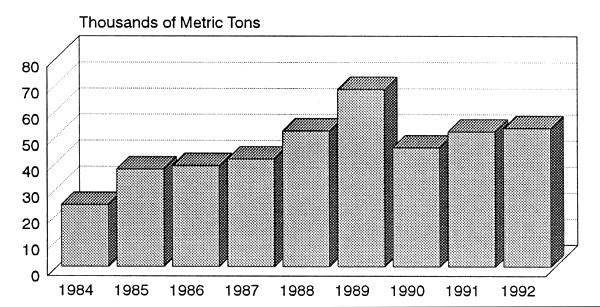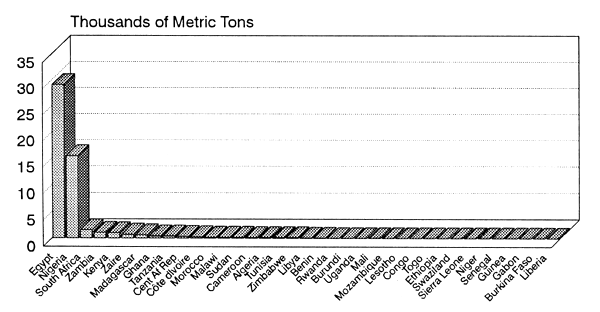Although there is believed to be much unrealized fish farming potential in Africa, continental and regional assessments have not been made. National-level studies that locate and quantify aquaculture potential using more than a few physical criteria are rare. Yet, international organizations providing technical and financial assistance need to make decisions on the allocation of time, personnel and finances among various fishery and aquaculture development activities. National governments and financing institutions have to have a foreknowledge of where the prospects for aquaculture development are most promising before committing scarce resources to development.
The main objective of this study is to map and to estimate the areal expanses having suitable to optimum potential for subsistence and commercial warm water fish farming in ponds. The perspective is continental. A secondary objective is to encourage countries with relatively large potentials for warm water fish farming development to undertake more detailed, national-level studies as a step towards formulating or refining an aquaculture policy and to improve planning for aquaculture development.
Aquaculture production in Africa has nearly doubled during the period 1984, when statistics were first published, to 1992, the year of the latest available data (Fig. 1.1). Nevertheless, in absolute terms, aquaculture is an industry in its early development stages in Africa. Inland fish farming production in 36 countries amounted to about 53,000 t in 1992 (FAO Fishery Information, Data and Statistics Service, 1994) (Fig. 1.2.). This compares with an inland fisheries catch of about 1.8 million tons in recent years (FAO, 1993).
Of the 48 countries included in this study1, there were 12 with no aquaculture production in 1992 (FAO Fishery Information, Data and Statistics Service, 1994) (Fig. 1.2). Inland water aquaculture production is dominated by Egypt and Nigeria. Together they accounted for 84% of the total in 1992. There are only three countries, South Africa, Zambia and Kenya, that produce more than 1,000 t.
Figure 1.1 Aquaculture Production from Africa
(Freshwater and Diadromous)

Source: FAO Fishery Information Data and Statistics Service (1994)
Figure 1.2 Aquaculture Production by Country in 1992
(Freshwater and Diadromous)

Source: FAO Fishery Information Data and Statistics Service (1994)
Because fresh water fish farming in ponds is the most widespread of aquaculture activities in Africa today (practised in 36 of the 48 countries included in this study) and because it produces the greatest amount of fish, it is the most promising avenue to increased cultured fish production in the short and medium term. Therefore, this assessment focuses on fish farming in ponds. Subsistence and commercial fish farming potential are assessed separately.
This study concentrates on warm water fish farming potential. This is because the prevailing climate in Africa is warm tropics (67% by area). Warm subtropics with summer rainfall make up an additional 10%. The remaining area is classified as cool or cold tropics (FAO, 1978). Fish farming in ponds integrated synergistically with other farming enterprises, or in close proximity to them, has a good opportunity for success where the economic and environmental conditions are most favourable. Therefore, the selection of the warm climate zones for this assessment ensures two outcomes: (1) uninterrupted growth of fishes, or at least, long growing seasons, due to relatively high prevalent temperatures, and (2) varied kinds of agricultural by-products in potentially good quantity available as fish farming inputs.